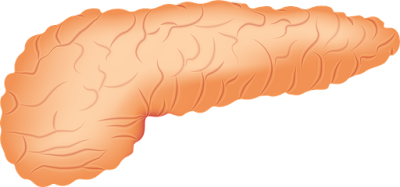Cumin in the treatment of liver
The use of cumin in the treatment of liver and biliary tract
Cumin - biennial plant of the family Umbelliferae. Available in Europe from France by Germany outside the eastern Polish border to the Urals, Siberia and Central Asia to the Himalayas.
Currently, cumin grown in many countries, sometimes on a large scale.
For medicinal purposes are harvested ripe seedheads cumin, dried in an airy and omłaca fruit. The crop maturing plantations mow the plants, dried, threshed and blown away fruit. The raw material is the fruit of caraway. Fruits are sometimes mistakenly called seeds. From raw material by steam distillation of caraway oil is obtained, and the main compound carvone.
Basic active compounds cumin
Fruits contain essential oil in an amount to 8.2%, and it is up to 75% carvone, limonene, and also very small quantities of other components. In addition, the fruit is present up to 22% of fatty oil, up to 25% of compounds of proteins and sugars, flavonoids, organic acids, coumarin compounds, salts and other minerals.
Action cumin
Fruits cumin encompass action gastrointestinal tract, bile ducts and liver, kidney and skin.
They work smooth muscle relaxant on intestinal bile ducts and sphincter of Oddi, which regulates the flow of bile and pancreatic juice into the duodenum.
Given orally enhance gastric acid secretion, improve appetite and digestion.
Cumin is a carminative, which facilitates painless departure gas, and this is especially important for young children and adolescents and the elderly suffering from intestinal atony.
Also of importance is the action of bile, bile and creative, which is not too vigorous, but clearly perceptible.
Caution! Preparations of cumin, used at the recommended therapeutic doses, have no toxic effects.
The use of cumin
Fruit cumin medicinal raw material and are commonly known dietary spice and its therapeutic properties are most often used in combination with other herbs in the form of mixtures or extracts.
Scope cumin includes many digestive ailments like bloating, belching, abdominal pain and slight constipation. Older people usually recommended for disorders secretion and flow of bile, intestinal atony and vegetative neurosis.
Fluid extract of the fruit of cumin is a component of the formulation Rhelax liquid that is primarily recommended for constipation and inadequate secretion of bile. Solid extract powder is a component Gastrochol recommended in disorders associated with the secretion and flow of bile.
Large amounts of cumin is used as a condiment for bread and other bakery products, meat dishes, meats, vegetables, salads, soups, certain cheeses and liqueurs. The ground is part of the spice mixes.
Preparations of cumin
Carminative herbs with cumin: Mix equal amounts of fruit and vegetables anise caraway or fennel and peppermint leaf, chamomile and thyme.
Pour 1 tablespoon of herbs 1 cup of boiling water and heat, covered, steamed for 15 minutes. Let stand for 15 minutes and strain.
Dosage: Drink 1/2 cup 2 times a day after meals.
Wine with cumin 3 tablespoons prepared above herbs pour a bottle of dry white wine and macerate two weeks, often shaking. Strain and drink the small glass 2-3 times daily after meals.
It is recommended that adults in the case of bloating and digestive disorders.
Herbs digestion with cumin: Mix 50 g of fruit cumin and after 25 g of fruit fennel, yarrow, herb doctor skyscraper and licorice root.
Pour 1 1/2 tablespoons of herbs in a thermos 2 cups of boiling water. Cover and let stand for 1 hour.
Dosage: Drink 1/2-2/3 cup for 30 minutes before each meal.


Comments
Post a Comment